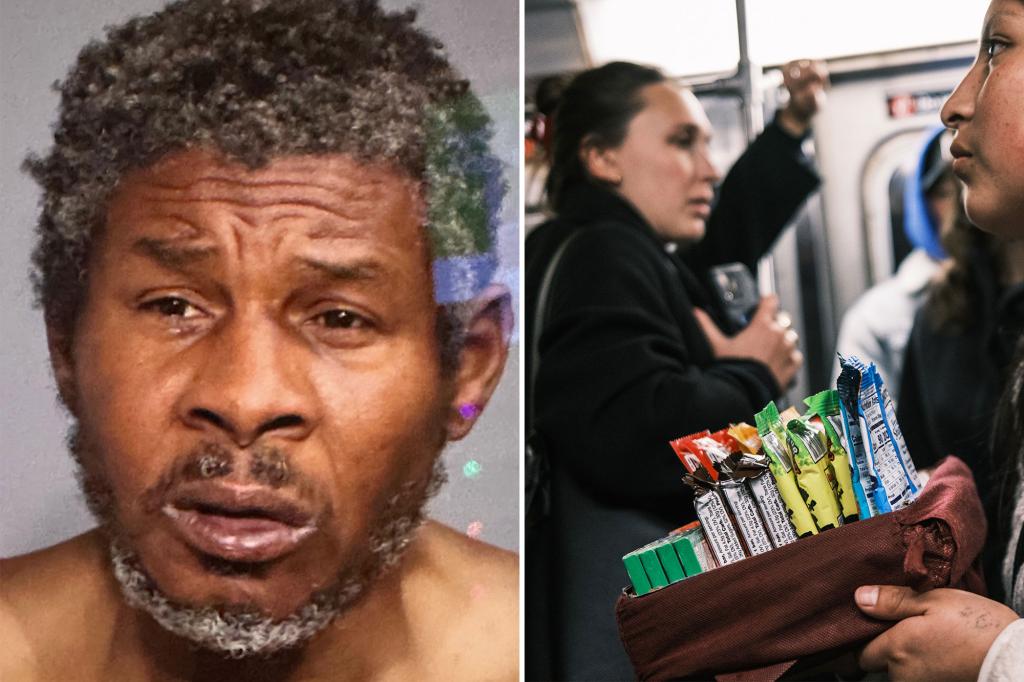A homeless man with a history of criminal offenses attacked two boys selling candy inside a Manhattan train station in an attempted robbery. The incident occurred at the Broadway-Lafayette B/D/F/M station around 6:30 p.m. when Alvin Doris followed the boys and tried to steal money from the younger boy and a cell phone from the older teenager. The situation escalated when the 16-year-old tried to retrieve his phone, resulting in Doris punching him multiple times in the face. Doris then threw the teen’s phone to the ground and struck the 11-year-old in the face, breaking his nose. Police charged Doris with robbery, acting in a manner injurious to a child, assault, and criminal mischief.
Alvin Doris, 62, was last known to have been staying at the Bowery Mission, a homeless shelter in Lower Manhattan. According to police sources, Doris has a substantial criminal record dating back to 1994, primarily in Lower Manhattan. He has been arrested nine times, with multiple assault charges, and a previous arson charge for intentionally causing damage to a Lower Manhattan building. Doris’ last arrest for assault was in 2012 when he hit a 26-year-old woman in the face at the corner of Bowery and Prince Street. He was set to appear in Manhattan Criminal Court for arraignment following the recent incident.
The violent encounter in the subway station involving Doris and the two boys selling candy highlights the dangers faced by vulnerable individuals, such as homeless children, while trying to earn money. The incident serves as a reminder of the risks faced by those in precarious situations, often at the mercy of those willing to exploit or harm them. The attack also sheds light on the struggles faced by homeless individuals, many of whom have complex needs and may engage in criminal activities due to various factors, including lack of support systems, mental health issues, and substance abuse problems.
The case of Alvin Doris underscores the challenges associated with addressing homelessness and related issues in urban areas like New York City. Despite efforts to provide shelters and support services, some individuals continue to struggle with homelessness, criminal behavior, and other problems. The incident raises questions about the effectiveness of existing programs and policies aimed at assisting homeless individuals and preventing criminal activities. It also highlights the need for comprehensive strategies that address the root causes of homelessness, such as lack of affordable housing, mental health services, and access to education and job opportunities.
As the criminal justice system processes Doris’ case, there is an opportunity to consider ways to prevent similar incidents in the future and support individuals at risk of homelessness or engaging in criminal behavior. This may involve strengthening community-based interventions, enhancing mental health and substance abuse services, and providing resources for vulnerable populations, including homeless youth. By addressing the underlying factors contributing to homelessness and criminal activities, it may be possible to reduce the incidence of violent encounters and improve outcomes for individuals like Alvin Doris and the two boys affected by the incident. As the case moves through the legal system, it offers a chance to reflect on the systemic issues at play and explore solutions that prioritize the well-being and safety of all individuals in society.


